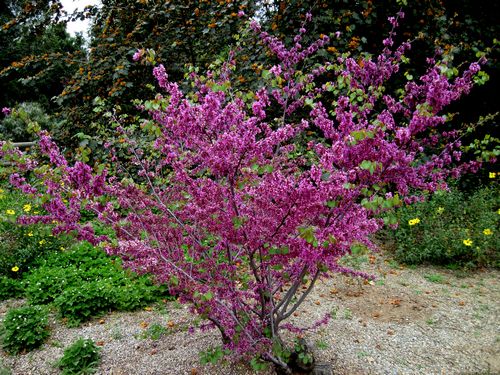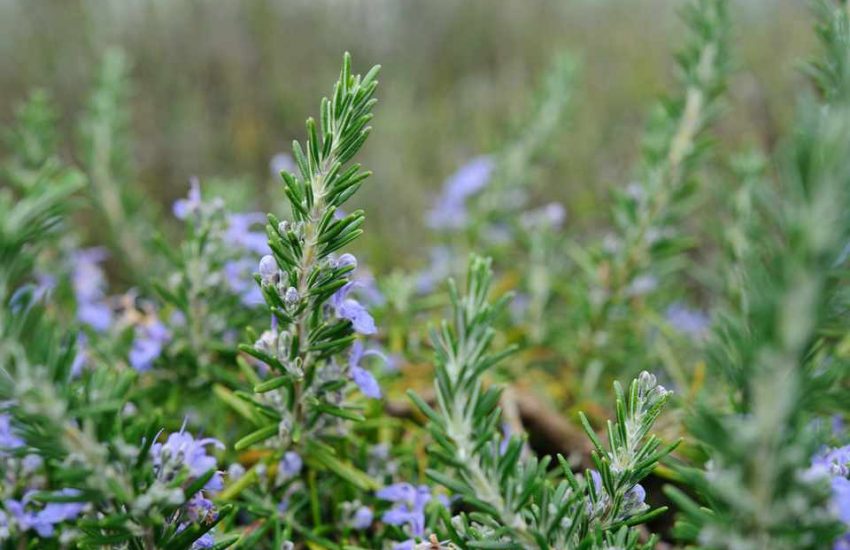Love Lies Bleeding Amaranth: A Guide to Growing and Caring for this Beautiful Plant
Love lies bleeding amaranth, also known as Amaranthus caudatus, is a striking plant that is well-known for its unique and vibrant appearance. It is a member of the Amaranthaceae family and is native to South America, where it has been cultivated for thousands of years. The plant is known for its long, drooping panicles of deep red flowers that resemble tassels, which give it its common name.

The name “love lies bleeding” is said to have originated from the plant’s appearance, which some people believe resembles blood dripping from a wound. In addition to its striking beauty, love lies bleeding amaranth has a rich cultural history. It has been used in traditional medicine for centuries and is also a popular ornamental plant in many parts of the world. In this article, we will explore the history, uses, and cultivation of love lies bleeding amaranth.
Botanical Profile of Love Lies Bleeding

Taxonomy and Species
Love Lies Bleeding is a common name for Amaranthus caudatus, an annual plant species belonging to the Amaranthaceae family. This species is also known as tassel flower or foxtail amaranth. It is native to South America, but it has been introduced to many parts of the world, including Africa, Asia, and Europe.
Physical Characteristics
Love Lies Bleeding is a unique and striking plant that can grow up to 1.5 meters tall. Its leaves are ovate and green, and its flowers are long and drooping, forming dense, tassel-like inflorescences. These inflorescences can be up to 60 cm long and come in various colors, including red, purple, and green.
Love Lies Bleeding is a hardy plant that can grow in a wide range of soil types and climates. It prefers full sun but can tolerate partial shade. It is also drought-tolerant and can withstand high temperatures.
In summary, Love Lies Bleeding is a fascinating plant species with unique physical characteristics. Its tassel-like inflorescences and striking colors make it a popular ornamental plant in gardens and landscapes around the world.
Cultivation and Care

Soil and pH Requirements
Love Lies Bleeding Amaranth thrives in well-drained soil that is rich in nitrogen. The ideal pH level for the plant is between 6.0 and 7.0. The soil should be fertile and loamy, and it should hold moisture well. If the soil is too acidic, adding lime can help raise the pH level. On the other hand, if the soil is too alkaline, adding sulfur can help lower the pH level.
Sunlight and Watering Needs
Love Lies Bleeding Amaranth requires full sun to grow and should receive at least 6 hours of direct sunlight per day. The plant should be watered regularly, especially during hot and dry weather. However, it is important not to overwater the plant as it can lead to root rot. The soil should be moist but not waterlogged.
Fertilization and Support
Love Lies Bleeding Amaranth benefits from regular fertilization with a nitrogen-rich fertilizer. This will help the plant produce more foliage and flowers. It is also important to provide support for the plant as it can grow quite tall and become top-heavy. Staking the plant or providing a trellis can help prevent it from falling over and breaking.
In summary, Love Lies Bleeding Amaranth requires well-drained, nitrogen-rich soil with a pH level between 6.0 and 7.0. It needs full sun and regular watering, but overwatering should be avoided. Regular fertilization with a nitrogen-rich fertilizer and providing support for the plant can help it grow strong and healthy.
Planting and Growth
Love Lies Bleeding Amaranth is a beautiful ornamental plant that can add a touch of elegance to any garden. It is easy to grow and maintain, making it a popular choice among gardeners. In this section, we will discuss the planting and growth process of Love Lies Bleeding Amaranth.
Germination Process
The first step in growing Love Lies Bleeding Amaranth is to start with good quality seeds. The seeds should be sown indoors 6-8 weeks before the last frost date. The seeds should be sown in a well-draining soil mix and kept moist until they germinate.
Once the seeds have germinated, they should be thinned out to ensure that each seedling has enough space to grow. Love Lies Bleeding Amaranth prefers warm temperatures and plenty of sunlight, so it is important to provide them with these conditions to ensure healthy growth.
Spacing and Location
Love Lies Bleeding Amaranth should be planted in a location that receives full sun. The plants should be spaced approximately 12-18 inches apart to allow for adequate air circulation and to prevent overcrowding.
It is important to choose a location that has well-draining soil. Love Lies Bleeding Amaranth does not tolerate wet soil, and overwatering can lead to root rot.
Maintenance and Pruning
Love Lies Bleeding Amaranth requires minimal maintenance. However, it is important to keep the soil moist but not waterlogged. The plants should be fertilized every 4-6 weeks with a balanced fertilizer.
Pruning is not necessary, but it can help to promote bushier growth and prevent the plants from becoming too tall and leggy. Prune back the stems by one-third in mid-summer to encourage new growth.
In conclusion, Love Lies Bleeding Amaranth is an easy-to-grow plant that can add a touch of elegance to any garden. With proper care and maintenance, these plants can thrive and provide beautiful blooms throughout the growing season.
Pests and Problems

Common Pests
Love Lies Bleeding Amaranth is susceptible to several pests, including aphids and ants. Aphids are small, soft-bodied insects that feed on the sap of the plant, causing leaves to curl and turn yellow. Ants are attracted to the honeydew that aphids produce and will protect them from predators. To control aphids, a strong jet of water can be used to knock them off the plant. Alternatively, insecticidal soap can be used to kill them. Ants can be controlled by placing sticky traps around the base of the plant.
Diseases and Prevention
Love Lies Bleeding Amaranth is generally a healthy plant, but it can be susceptible to root rot if it is overwatered or planted in poorly draining soil. To prevent root rot, ensure that the plant is planted in well-draining soil and that it is not overwatered. Invasive weeds can also be a problem, as they can compete with the plant for nutrients and water. Regular weeding can help prevent this problem.
Overall, Love Lies Bleeding Amaranth is a relatively low-maintenance plant that is easy to grow. With proper care and attention, it can thrive and add a stunning pop of color to any garden.
Harvesting and Usage
Harvesting Seeds and Foliage
Love lies bleeding amaranth is a hardy annual plant that can grow up to 3 feet tall. The plant produces long, drooping clusters of bright red flowers that resemble tassels. These flowers bloom throughout the summer and into the fall, and can be harvested for their seeds and foliage.
To harvest the seeds, wait until the flowers have faded and the seed heads have turned brown. Cut the seed heads off the plant and hang them upside down in a dry, well-ventilated area to allow the seeds to dry completely. Once dry, the seeds can be stored in an airtight container for up to a year.
The foliage of love lies bleeding amaranth can also be harvested for use in cooking or as a medicinal herb. The leaves are rich in protein and can be used as a spinach substitute. To harvest the leaves, wait until the plant is at least 6 inches tall and then pluck the leaves from the stem.
Culinary and Medicinal Uses
Love lies bleeding amaranth has a long history of use in traditional medicine. The plant is believed to have a number of medicinal properties, including anti-inflammatory, anti-bacterial, and anti-viral effects. The leaves of the plant can be used to make a tea that is said to help with digestive issues, fever, and respiratory infections.
In addition to its medicinal uses, love lies bleeding amaranth is also used in cooking. The leaves can be sautéed or steamed and used as a spinach substitute. The seeds of the plant can be ground into flour and used to make bread or added to soups and stews as a thickener.
Ornamental and Landscape Design
Love lies bleeding amaranth is a popular ornamental plant that is often grown for its striking red flowers. The plant is also commonly used in cut flower arrangements and bouquets. The dried flowers of the plant can be used in flower arrangements or as a decorative element in wreaths and other crafts.
In landscape design, love lies bleeding amaranth is often used as a border plant or as a focal point in a garden bed. The plant is drought-tolerant and can grow in a variety of soil types, making it a versatile choice for many gardeners.
Frequently Asked Questions

Is the ‘Love Lies Bleeding’ amaranth considered invasive in certain regions?
Yes, the ‘Love Lies Bleeding’ amaranth can be considered invasive in some regions. It is important to check with your local agricultural extension office or plant nursery to determine if it is safe to plant in your area.
Where can I purchase ‘Love Lies Bleeding’ amaranth plants or seeds?
‘Love Lies Bleeding’ amaranth plants or seeds can be purchased at many garden centers or online retailers. It is important to ensure that you are purchasing from a reputable source to ensure the quality of the plants or seeds.
How should I care for my ‘Love Lies Bleeding’ amaranth to ensure optimal growth?
‘Love Lies Bleeding’ amaranth requires full sun and well-draining soil. It is important to water regularly, but avoid overwatering as this can lead to root rot. Fertilize with a balanced fertilizer every two weeks during the growing season.
Can ‘Love Lies Bleeding’ amaranth be successfully grown in containers?
Yes, ‘Love Lies Bleeding’ amaranth can be grown successfully in containers. It is important to use a well-draining soil and ensure that the container has adequate drainage holes. Water regularly and fertilize every two weeks during the growing season.
What is the recommended spacing for planting ‘Love Lies Bleeding’ amaranth?
The recommended spacing for planting ‘Love Lies Bleeding’ amaranth is 12-18 inches apart. This will allow the plants to have adequate space to grow and prevent overcrowding.
How tall can I expect my ‘Love Lies Bleeding’ amaranth plants to grow?
‘Love Lies Bleeding’ amaranth can grow up to 4-6 feet tall. However, the height can vary depending on growing conditions and the specific cultivar.


